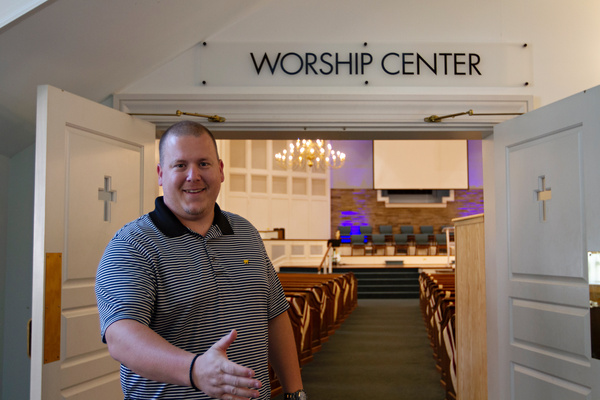
Visitor retention is a challenge for most churches, but it has the harshest – and most noticeable – effect on small churches. Pastors of small churches may feel envious of larger churches, which often have more resources and options for engagement. However, there is power in small church visitor engagement, where pastors, church leaders, and congregants can work together to create personal connections with new visitors.
The Grass Isn’t Always Greener on the Other Side
Some small churches think the best way to get Big Church Engagement is to adopt and imitate the strategies of large and mega-churches. For example, take a look at the following example of a follow-up email:
Hello and Welcome from [Church Name]
We are so glad you visited us recently! We hope we had the opportunity to meet you personally and hand you one of our welcome packets.
Inside the welcome packet, you will find an outline of our current ministries as well as our church’s statements of faith. A summary of the welcome packet information is also attached to this email for your reference. More information can also be found at [church website].
Whether you were visiting with family, passing through, or looking for a new church home, we were delighted to have you and hope to see you again soon!
If you have any questions at all, please don’t hesitate to reach out.
God bless,
[Name]
Church Administrator
We have not reached out. They liked the service. The people seem nice. The preaching was good, and the pastor, whom they did meet, was likable. And yet, the email example above illustrates a perplexing trend among relatively small churches under 200 members.
The Power of Small Church Visitor Engagement
Why imitate large churches that pretend to be personable with many visitors? I understand the challenge for large churches, having served as the executive minister of one. It is difficult enough to keep up with church members, much less the many visitors coming in and out. They must resort to form letters that merge in names.
But being truly personable is the advantage that small churches have, and yet, they are taking little advantage of their advantage. Instead, they revert to big church practices to make their “personal” connections: welcome desks (that visitors must approach) and form letters and emails.
To give another example is the “Contact Us” email form to use on church websites. The inquirer wishing to make contact fills out the “Name,” “Subject,” and “Message” boxes, trusting that their email will go to the anonymous person at the other end.
How to Foster Small Church Visitor Engagement
If you are small (200 and under), take advantage of your size. You pastors know who your visitors are. Approach them before the service. Stand at the door after the service so that you can greet them. Don’t put your greeting team behind a welcome desk that visitors must approach. Rather, let them be free to approach the visitors. If you have greeters at doors, teach those greeters to say more than “We’re glad to have you” or “Would you like our (coffee mug, cup, load of bread, etc.”). Most of you have a handful of members who are naturally outgoing. Tap them to meet and get to know those strangers who have walked through your doors.
Boost Engagement and Keep Guests Coming Back
For those visitors who do take the time to fill out their contact information, understand that they would not give away phone numbers and email addresses if they did not wish to be contacted. You pastors have the time to make those contacts, especially by email. Or, again, have those members who are not shy make the calls.
The point is to do what you can do better than any megachurch—make a personal connection. Show personal interest in those who walk through your doors. Take the time to learn about them. If you do, they will come back. They want a church where not necessarily everybody, but at least the pastor and a few others know their name.
Frequently Asked Questions
Here are some common questions pastors might ask:
1. How can small churches effectively follow up with first-time visitors?
Effective follow-up is crucial for retaining visitors. Small churches can personalize their approach by sending handwritten notes or personalized emails expressing gratitude for the visit. A prompt follow-up, ideally within 24 to 48 hours, shows attentiveness. Additionally, inviting visitors to upcoming events or small group meetings fosters a sense of belonging and encourages further involvement.
2. What role does online presence play in small church visitor engagement?
In today’s digital age, a strong online presence is vital. Maintaining an up-to-date and user-friendly website provides potential visitors with essential information about service times, location, and church activities. Active social media profiles can also showcase the church’s community and culture, making newcomers feel more comfortable and connected even before attending in person.
3. How can small churches train their congregation to be more welcoming to visitors?
Fostering a welcoming atmosphere in small churches begins with intentional efforts from leadership. Pastors and staff should actively engage with congregants before and after services, positioning themselves in accessible areas to initiate conversations. By learning members’ names and stories, leaders model genuine connection, encouraging the congregation to emulate this behavior. Organizing small groups or social gatherings outside regular services further strengthens community bonds, creating an environment where visitors feel valued and embraced.
For more on this topic, please read: “Create a Healthy Church Community Within Your Congregation.”
Was this article helpful? You might also enjoy:



